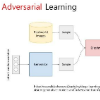We investigate privacy-preserving, video-based action recognition in deep learning, a problem with growing importance in smart camera applications. A novel adversarial training framework is formulated to learn an anonymization transform for input videos such that the trade-off between target utility task performance and the associated privacy budgets is explicitly optimized on the anonymized videos. Notably, the privacy budget, often defined and measured in task-driven contexts, cannot be reliably indicated using any single model performance because strong protection of privacy should sustain against any malicious model that tries to steal private information. To tackle this problem, we propose two new optimization strategies of model restarting and model ensemble to achieve stronger universal privacy protection against any attacker models. Extensive experiments have been carried out and analyzed. On the other hand, given few public datasets available with both utility and privacy labels, the data-driven (supervised) learning cannot exert its full power on this task. We first discuss an innovative heuristic of cross-dataset training and evaluation, enabling the use of multiple single-task datasets (one with target task labels and the other with privacy labels) in our problem. To further address this dataset challenge, we have constructed a new dataset, termed PA-HMDB51, with both target task labels (action) and selected privacy attributes (skin color, face, gender, nudity, and relationship) annotated on a per-frame basis. This first-of-its-kind video dataset and evaluation protocol can greatly facilitate visual privacy research and open up other opportunities. Our codes, models, and the PA-HMDB51 dataset are available at https://github.com/VITA-Group/PA-HMDB51.
翻译:我们在深层学习中调查隐私保护、基于视频的行动认识,这是一个在智能相机应用程序中日益重要的问题。我们制定了一个新的对抗性培训框架,以学习输入视频的匿名转换,从而在匿名视频中明确优化目标通用任务性能与相关隐私预算之间的权衡。值得注意的是,在任务驱动背景下通常定义和计量的隐私预算无法使用任何单一模型性能来可靠地显示,因为对隐私的有力保护应维持在任何恶意模式下,而这种模式试图窃取私人信息。为了解决这一问题,我们提出了两种新的优化战略,即模型重新启动和模型连载,以实现针对攻击者模型的更普遍的视觉隐私保护。已经进行了广泛的实验和分析。另一方面,由于很少有公共数据集,数据驱动(监督)学习无法在任务驱动环境中充分发挥作用。我们首先讨论交叉数据集培训和评估的创新性,能够使用多个单一任务数据集(其中一个是目标标签,另一个是高层次的图像保护),在我们的隐私数据库/数据库中,我们用新的数据定义(一个选项),我们用新的数据定义来构建一个新的数据库。




